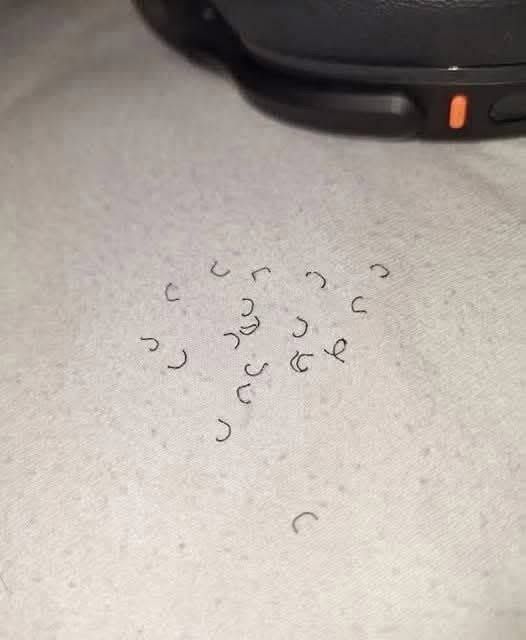Have you ever woken up to find tiny curled shavings on your bedsheets, desk, or even your wrist after removing your smartwatch? At first, these odd little bits might remind you of miniature Velcro hooks. And if you don’t use Velcro anywhere near your bed or desk, it can be a real mystery—where could they have come from?
While it might seem random, there’s a surprisingly common explanation tied to something many of us wear every day: the strap of your smartwatch or fitness tracker. If your watch band is made of silicone or rubber, you’ve probably encountered these little shavings at some point. Though they may catch you off guard, they’re not as unusual as they seem. These shavings are actually small fragments that have worn off your band over time.
The constant friction from daily wear, combined with skin contact, moisture, and movement, gradually wears down the material, causing it to shed in the form of tiny curls that look almost like Velcro hooks. Imagine a road that gets worn down after countless cars pass over it—over time, even the strongest pavement starts to break apart. This is essentially what’s happening with your watch band.
Several factors speed up the shedding process. First, daily use is a major contributor. Every time you twist your wrist, adjust your watch, or take it on and off, you put stress on the strap material. That repetitive motion slowly causes the silicone or rubber to degrade. Add sweat and natural oils from your skin into the mix—whether you’re working out or simply wearing your watch on a warm day, moisture builds up underneath the band, and your skin’s oils can interact with the material. Over time, this combination accelerates the breakdown, leading to peeling and flaking.
Another culprit is friction, particularly from resting your wrist on desks while typing or rubbing the band against tight sleeves or cuffs. These constant micro-abrasions wear down the band’s surface, causing those small, Velcro-like curls. Also, not all bands are created equal. If you’re using a lower-end or older strap made from cheap silicone or rubber, you’re more likely to notice these issues early on.
On the other hand, higher-quality materials, like fluoroelastomer, tend to hold up better under daily wear and resist shedding for much longer.
If you’re worried about these little shavings, don’t stress—there’s nothing harmful about them. They don’t mean your device is damaged or dangerous. In most cases, they’re just a sign that your band is showing signs of wear. However, if you notice excessive flaking, cracks, or irritation on your skin, it’s a good idea to replace the strap.
These tiny shavings might actually be your watch’s subtle way of saying, “It’s time for an upgrade.” So, how can you prevent this mystery from recurring in the future? A few simple habits can help extend the life of your band:
Clean your band regularly – Wash it with mild soap and water to remove sweat, oils, and dirt that contribute to deterioration.
Rotate between bands – Instead of wearing the same strap every day, rotate between different ones to give each one a break. This can help prolong their lifespan.
Minimize friction – Avoid unnecessary rubbing of the band against desks, armrests, or tight sleeves. If your watch constantly makes contact with these surfaces, it speeds up wear. Loosening your sleeves or changing your wrist position while typing can help.
Upgrade to a higher-quality band – When it’s time to replace your strap, consider investing in a more durable material. While it might cost a little more upfront, a higher-quality band can save you from frequent replacements.
At the end of the day, those little Velcro-like shavings might seem strange, but they’re simply a natural byproduct of wearing your smartwatch regularly. If you notice them becoming more frequent, it’s probably time to check your strap for wear and tear. Replacing it when needed ensures your watch stays fresh, your wrist remains comfortable, and the mystery of the shavings is solved before it even starts.
